 by Pieter Thomassen
by Pieter Thomassen
| | | | | |
Shimakaze Class Super Dimensional Battlecruiser
|
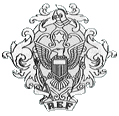
|
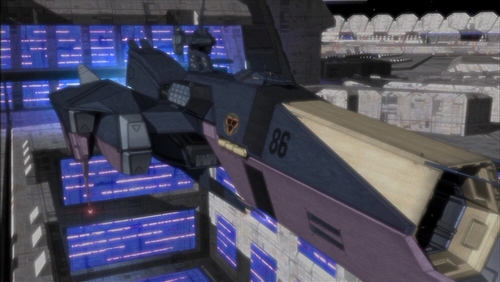
|
 |
 |  |  |  |  |  |
Names and disposition:
| SDBC-14 | | UES Shimakaze | Commissioned 2042 | In service. |
| SDBC-15 | | UES Icarus | Commissioned 2041 | In service. |
| SDBC-16 | | UES Le Triomphant | Commissioned 2043 | In service. |
| SDBC-17 | | UES Knight | Commissioned 2044 | In service. |
| SDBC-18 | | UES Scirocco | Commissioned 2045 | In service. |
| SDBC-19 | | UES Sagiri | construction suspended | -- |
| SDBC-20 | | UES Hero | construction suspended | -- |
| SDBC-21 | | UES Maestrale | construction suspended | -- |
| SDBC-22 | | no name assigned | construction suspended | -- |
| SDBC-23 | | no name assigned | construction suspended | -- |
Note: the REF paints temporary, tactical numerical designators on their vessels which are not related to the official hull numbers of the vessels themselves. For example, the Icarus SDBC-15 carried the number '99' during the Edwards Rebellion but during the final Invid battle, she was assigned the tactical number '86'.
Ship's complement:
- Ships' crew (450 men),
- Air group (300 men),
- Life support limits are for a full combat complement and about 1000 supernumaries (~1750 men total).
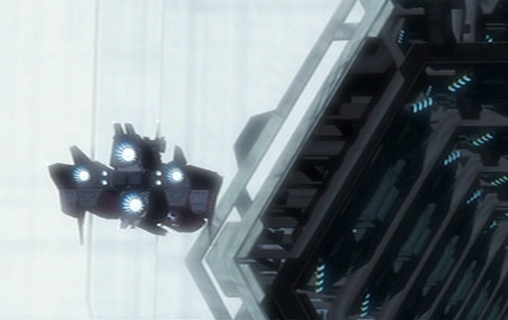
Dimensions:
- Length: 548 m over all.
- Height: 100 m over the main hull, 147 m over all.
- Width : 238 m over all.
- Mass : 528,450 metric tons, operational.
- Fuel Mass: 60,530 metric tons, maximum.
Propulsion systems:
- Main power system: RRG Mk.31 protoculture-fueled Reflex furnace. The powerplant of a Shimakaze-class vessel can deliver up to 677 Terawatts of power, and can operate for seventy minutes at maximum power before overheating.
- Maneuvering thrusters (14): Fusion-plasma reaction thruster clusters with steerable nozzles. Four are located around the forward hull, four around the aft hull, four above and below the hull outriggers, and two on each side of the hangar support pylons.
- Reaction-mass thrusters (2): Tirol Engineering NET-23 fusion-plasma reaction thrusters, mounted above the other in the rear hull.
- Reaction-mass thrusters (2): Tirol Engineering NET-24 fusion-plasma reaction thrusters, one mounted at the rear end of each hangar support structure.
- Emergency thrusters (4): SNECMA BCET-6T fusion-plasma reaction thrusters with protoculture energizer paired in two vertical arrangements to the inside of the main reaction wing thrusters.
- Anti-gravity system (1): Four RRG Titan anti-gravity pods.
- Space Fold (1): RRG (Robotech Research Group) Mk31 spacefold. This system can generate a spherical fold bubble and can transport several subluminal ships in its fold radius.
- Planetary Capabilities: The Shimakaze-class has minimal atmospheric capabilities through its reaction thrusters and anti-gravity system. However, maximum speed and maneuverability are low and extreme care must be taken not to overstress the hull structure.
While landed in an unprepared location, the battlecruiser must operate her antigravs at -99% local g at all times to prevent damage to the hangars, outer sensor arrays, and the cargo hold. A 'cold' landing can be made if the landing spot has been suitably prepared with support scaffolding. Typically this is only available at fleet bases.
As the ship will float, an oceanic landing is the preferred landing method. However, this will limit the accesibility to the ship, especially for mecha.
Endurance and mobility limits:
- The dry stores endurance is one year maximum; after that, the battlecruiser needs to restock. Water stores are recycled almost totally, and many crews add hydroponic plants to unused spaces, providing the crew with a limited supply of fresh vegetables, but this is insufficient to provide for the crew indefinitely.
- The mecha consumables supplies (mainly missiles) are limited; the Shimakaze is unable to sustain continuous combat operations for much more than 20 days.
- The Reflex furnace can function for about 25 years at normal usage levels before an energizer rebuild is necessary.
- At full power, the main propulsion systems can produce up to 13.8 Giganewtons of thrust at a minimal reaction mass efficiency profile, or as little as 0.35 Giganewtons of thrust at a maximum efficiency setting. At lower power levels, these thrusts are commensurately smaller.
- At full power, the Shimakaze-class can achieve a maximum delta-v of 170 kps at the cruising acceleration of 0.1 gees, a maximum delta-v of 34 kps at the battle acceleration of 1.0 gees, and a delta-v of at most 9.5 kps at the flank acceleration of 2.5 gees. At lower power levels, these ranges are commensurately smaller.
- The maximum sustained atmospheric speed is Mach 1. The maximum hover time on the anti-gravity systems is limited only by the protoculture supplies and maintenance requirements.
Weapon systems:
- RRG Synchro Cannon Mk.1A (1): This heavy ship-borne weapons has an effective range of 140,000 km; at full power it has the effective yield of a 20 Mt fusion weapon, but in typical space battles the cannon is fired at a reduced setting of 150 Kt, which allows for a higher rate of fire. Unlike the Zentraedi Monitor, or the Macross battlefortresses and their derivatives, this weapon, based upon the latest technologies, does not require a split-boom. The weapon is located in an aperture in the central forward body.
- Bofors RL-45 twin Particle Beam Turret (1). The upper hull of the Shimakaze class mounts one turret with the largest cannons in general use with the Robotech Defense Forces. The weapons have a cyclic rate of five seconds and fire a sustained beam with a total impact energy of 9000 MJ.
- Mk. 410 heavy VL missile tube (30). Behind the heavy turret and in front of the bridge tower thirty heavy missile tubes are mounted in two rows of fifteen. The tubes can launch virtually any of the standard REF anti-ship missiles, including the heavy Skylord weapons. A missile is located between the two rows of tubes, sufficient for 60 Skylord missiles, or a larger number of smaller missiles.
- RF-10T Point Defense turrets (5): Five standard REF CIWS turrets are mounted around the command tower. Each can fire 320 MJ of particle energy four times per second, or a smaller yield at a higher rate of fire.
Air group and mecha complement:
- 24 VF/A-6 Alphas/VQ-6S ASAVANs(*) in the main launch bay,
- 12 VF/B-9 Betas or other mecha in the secondary hangars,
- 2 RC-4 Rabbit light personnel and cargo shuttles.
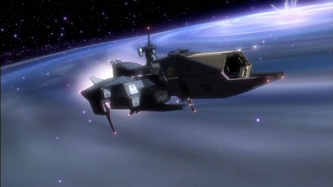
Notes:
At least one Cyclone mecha is available for each pilot, as well as a variable number for ship security and such.
There is sufficient room in the main hull hangar for ten Alpha/Beta combinations instead of the 24 Alphas.
Electronics:
- A large Protoculture detector, capable of detecting and identifying Invid energizer configurations at distances of over 20 AU is often installed in this class. The antenna is mounted under the cargo bay.
- The Shimakaze class are all equipped with Shadow cloaking devices.
Design notes:
The Shimakaze class design started as an attempt to design a vessel that could replace three older ship classes in the Robotech Expeditionary Forces: the Tristar-class large cruisers, the Battle-class heavy cruisers, and the Garfish-class light scout cruisers. Although it was intially hoped that this could be achieved on a vessel roughly comparable in size to the Battle-class, this turned out to be impossible and the design grew until it was larger than the Tristar-class, although still somewhat smaller than the Ikazuchi-class carriers. This growth meant that the Shimakaze-class would never be numerous enough to replace the many smaller vessels, but the design was eventually accepted as a more dedicated ship killer vessel meant to escort the Ikazuchi-class carriers.
The Shimakaze-class was designed with much of the modularity also used on the Garfish-class. The entire nose was designed as a bolt-on, stand-alone hull section, as was the lower central body section. This would have given the design an incredible flexibility, like the Garfish-class they were then still slated to replace. Similarly with the hull design, requirements were drawn up for armored cargo sections that could be delivered to planetary surfaces, but also beam and missile armed sections to gove the class more firepower when used as fleet cruisers.
However, in 2029 the second of the new cruisers, the Icarus, was stolen in the course of the Edwards rebellion. When the vessel was retaken, she mounted a new design nose section with a new type of cannon, almost as powerful as a reflex cannon, but faster firing, more reliable and less voluminous. In short order this nose section was analyzed and copied, then became the standard section for all Shimakaze-class vessels. A large protoculture detector is most commonly mounted on the cargo-attachment underneath the hull.
The Shimakaze-class has a hexagonal hull, with two outriggers that mount engines, hangars and sensor systems. The forward section of the hull is detachable but as explained above, under the current operational fitting, always contains a Synchro cannon. The lower aft part of the hull is open so that another specialised hull section can be attached there. The upper forward part of the fixed hull contains the heavy anti-ship cannons and the heavy missile launchers; underneath the missile magazine the Alpha hangars are located, with two quick-launch bays on each side of the hull. A command tower rises over the main hull, protected by the CIWS emplacements. The outriggers contain additional hangars for Beta fighters or other mecha, as well as additional sensor emplacements.
The proposed naming scheme for the Shimakaze class was for World War 2 era destroyers, a very numerous category of names which would have sufficed for the large production run envisioned for this class.
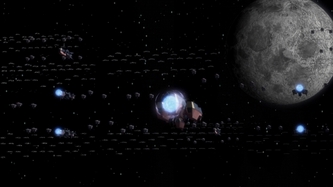
History:
Although originally intended to replace three different ship classes and later to be the multi-purpose escort companion to the Ikazuchi-class carriers, the Shimakaze class turned out to be something of a white elephant during the attempts to dislodge the Invid from the Earth. Rather than with heavy warships, the Regis's Invid almost exclusively used massive suicide attacks from unarmed orbital carriers.
This made the existance of a ship class devoted to protect the carriers from heavy warships superflous. The Ikazuchi-class carriers were considered capable of dealing with this threat themselves more efficiently, on account fo their large number of defensive fighters, and their smaller but more numerous cannons, which were quite capable of dealing with the Invid Mollusk carriers.
As a consequence, production of the class was curtailed after the fifth unit, UES Scirocco. The sixth through tenth vessel had already been started, and the unfinished ships were stored near Tirol, but all other long-lead items were used for other ships or scrapped.
As related, the UES Icarus was stolen during the Edwards Rebellion. At that time the first of the class had not even been finished
yet, but the basic design of the Shimakaze-class was proven in this conflict, when the UES Icarus destroyed the battleship UES Tokugawa with her new main cannon. The other ships of the class did not take part in this conflict, as they were still incomplete and the REF did not need to use unfinished ships to deal with the rebels. One consequence of this action though was the production of Synchro cannon forward modules for all Shimakaze class ships.
After the rebellion the nameship was completed and three more units entered service, typically serving as the escort squadron for the battlefortresses of the REF. During the final battle of the Third Robotech War, four of the five vessels of the class formed the Bombardment Group with the SDF-4 Liberator. The UES Icarus also gave sterling service in the first battles with Haydonite forces.
Return to REF Naval index.
Go to Robotech Reference Guide Home Page.
Robotech (R) is the property of Harmony Gold. This document is in no way intended to infringe upon their rights.
Content by Pieter Thomassen
HTML by Robert Morgenstern (rmorgens@ieee.org)
Copyright © 27 Robert Morgenstern, Pieter Thomassen, Peter Walker






